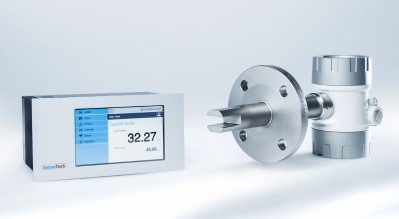Inline beer analyser claims to cut water and energy costs
The supplier said that by measuring in the product flow of a main pipe, the Liquisonic Plato 40 can analyse beer “directly and completely” by using a combination of an ultrasonic sensor with a process refractometer.
The company claims that its analyser measures the extract and alcohol content in addition to the resulting concentration of original gravity and the temperature.
Saving resources
“It is the goal of breweries to realise quality control, efficiency and environmental protection by saving energy and water,” said SensoTech.
The companyclaims that the installation of a “modern and reliable” measuring system is required to meet these demands, which is why it has developed the LiquiSonic Plato.
SensoTech said the device candetect the extract content of the liquid during the lautering process which means the sparge water point can be “determined exactly”.
The company explained that by equipping the system with an EXtrACT-Totalizer the current wort concentration with the wort flow can becalculated.
The calculated value is integrated in the controller and can inform the brewer at any time about the average wort concentration, the initial extract in the downstream buffer tank or the wort boiler being filled.
"With this knowledge, it is possible to minimise the costs of water and energy as well as to optimise the initial extract in the buffer tank or the wort boiler,” said the technology supplier.
No bypass measurement
A spokesperson for SensoTech told BeverageDaily.com that this is the 8th edition of the inline measuring device for original gravities on an ultrasonic base.
According to the spokesperson, new technical developments included full or empty liquid monitoring in the pipes using a SonicGraph (internal oscilloscope).
The measuring device consists of one or more “intelligent probes” and a controller which are connected with each other by a digital line which can vary in length.
The ultrasonic sensor and the refractometer are directly mounted in the main pipe. “All devices are cleaned in the common cleaning in place (CIP) process and have consequently a significant benefit compared to bypass solutions,” said SensoTech.
The company said its ultrasonic sensor consists completely of stainless steel and meets the requirements of hygienic and bypass-free installation conditions and all devices are cleaned in the common CIP process.









